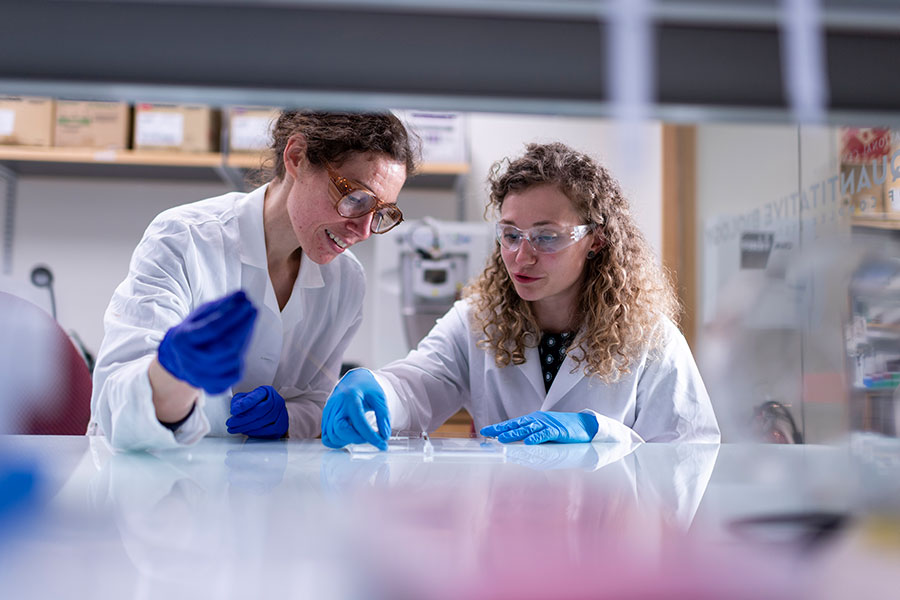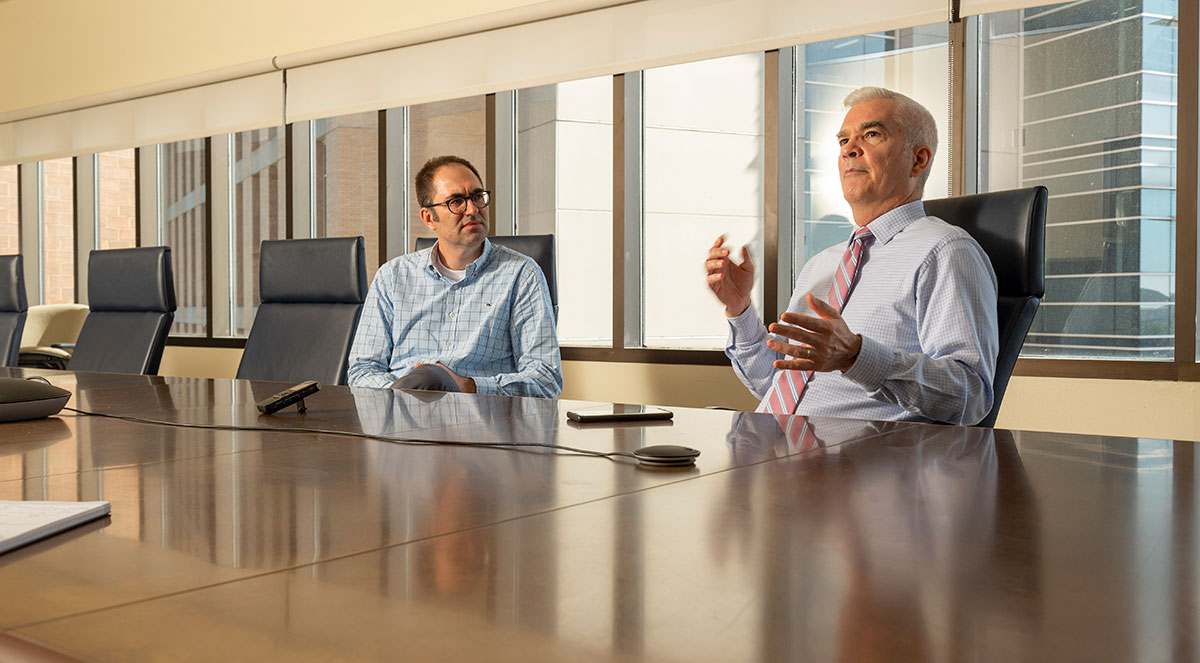When biochemist Josh Coon, Thomas and Margaret Pyle Chair in Metabolism at Morgridge, first started developing scientific instruments to measure molecules in living systems, his criteria for finding partners on campus at UW–Madison were simple and clear.
“We were technology people interested in making better measurements, and we needed cool projects to help us push the technology,” he recalls.
Fifteen years later, that approach has completely flipped on its head. Coon’s lab is the nexus of a prolific network of collaborations on campus, drawing on world-class technology to help push the science.
One of his most prominent partnerships is with the Carbone Cancer Center, using mass spectrometry to help researchers find new ways to prevent and treat cancer.
Mass spectrometry uses instruments to measure the mass of molecules and tell you the chemical structures. When studying cancer, scientists look for molecules, or proteins, that change when cancer cells appear. They try to prove whether those changes in these targets have a direct role in cancer development. And if so, they test ways to stop it.

The seeds of the partnership were planted about a decade ago during a series of meetings aiming to bring tech and cancer people together. Then in 2015, thanks to investments by the Morgridge Institute, the Coon lab began measuring lipids and metabolites, in addition to proteins. With the potential for even more specific studies and potential solutions, “we deliberately sought him out,” says Howard Bailey, who directs the cancer center.
Mass spectrometry is not a commodity technology like DNA sequencing, with scientists paying a set fee for a package of services. The tech teams work with each collaborator to help them design their experiments. That takes a lot of back and forth and it can be one to two years from the first handshake to getting results that are actionable and publishable. “Those deep collaborations are really what makes things work,” says Coon.
More than 30 different Cancer Center members have joined mass spectrometry projects that range from basic questions like “What is this protein doing?” to studying more clinically relevant patient samples and everything in between.
“There’s a reason why some people do better than others with cancer. The signals are there; we just have to be able to read and interpret them.”
Howard Bailey, director, Carbone Cancer Center
UW–Madison cell and regenerative biology Professor Emery Bresnick, for example, works on discovering mechanisms that cause blood cancer predispositions. When his team has an intriguing molecule, they bring it to the Coon lab to better understand what it does, to whom, and how, and mass spec tools can provide a short list of possible leads. “It’s essential to have that technology,” says Bresnick. “The data sets open up new doors that sometimes open through serendipitous discovery, but sometimes they never open.”
UW–Madison medicine and oncology Professor Mark Burkhard is studying the person-to-person differences in breast cancer to be able to deliver more precise treatments. He worked with the Coon lab to better understand what mechanisms control DNA getting segregated into daughter cells during cell division. Some of the more effective cancer treatments target this DNA segmentation process because it is highly error prone in cancer cells. With a better understanding of the biology, Burkhard’s team can use that information to select which patients should receive which drug.
One key strength of the partnership is its decentralized approach. There are a dozen labs on campus with mass spec expertise, and the team has taken on the role of asking what a researcher is trying to do, assessing whether mass spec can help, and then serving as matchmaker to find the best fit. “We’re embracing all of the expertise on campus, which is going to be really important for the next five to 10 years of cancer research,” says Coon.
His lab even offers micro grants to help get a collaboration started and defray the risk, to get some momentum that will lead to joint publications or grants, while minimizing the burden on the cancer center.
As the tools progress and measurements get faster and better, the hope is to integrate it into tailored patient care.
In every cell, there are 20,000 proteins, several hundred metabolites, and couple of thousand lipids. When those things get perturbed, bad things can happen, but we don’t really know at a molecular level what’s changing enough to be able to understand who does well and who doesn’t.
“There’s a reason why some people do better than others with cancer,” says Bailey. “The signals are there; we just have to be able to read and interpret them.”
